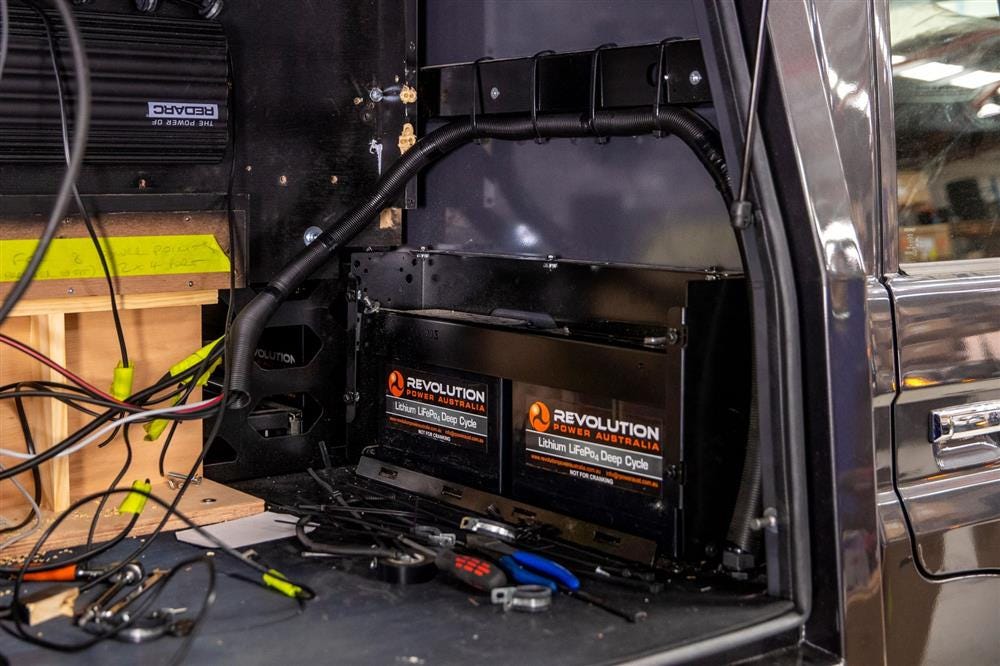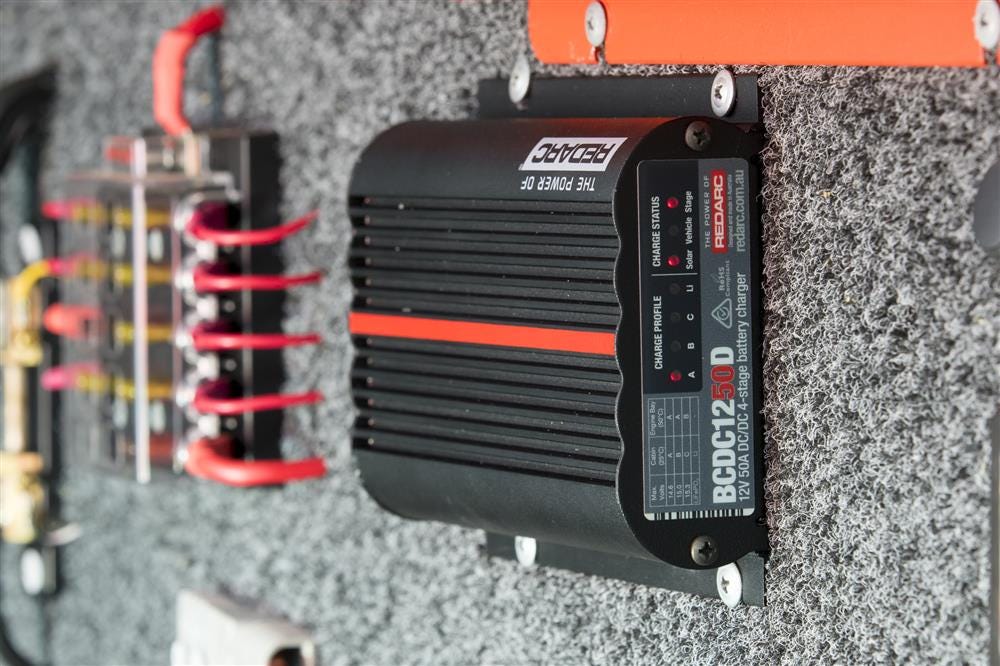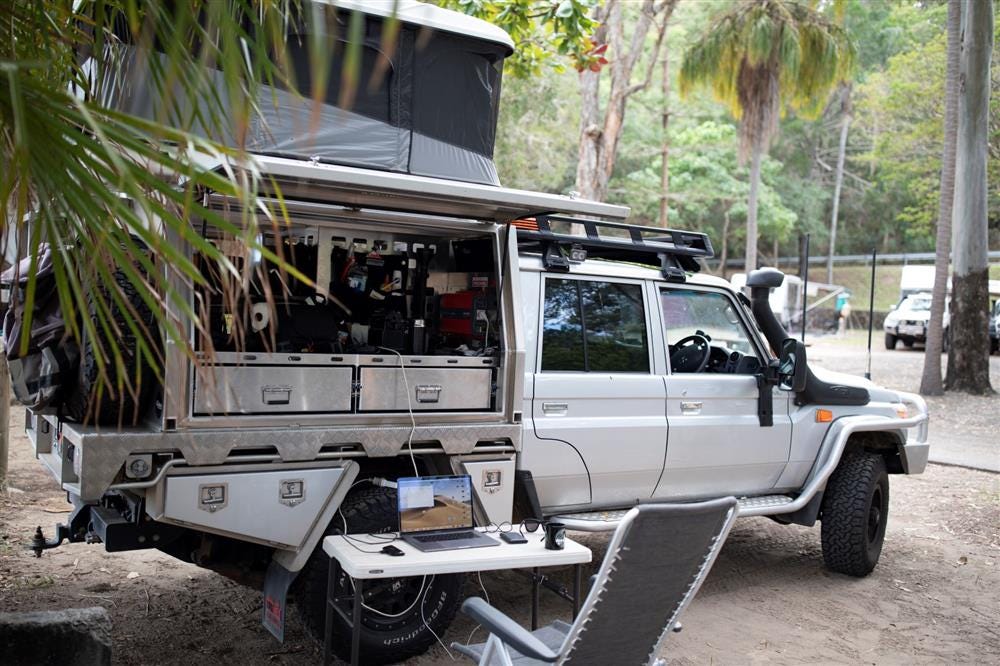What’s the big deal?
Make no mistake, lithium batteries are becoming the new norm and for good reason. When you compare lithium against the likes of AGM and lead acid batteries, the benefits do start to stack up.
As a starting off point, lithium batteries can be discharged down to just 20% State of Charge (SOC) whereas with an AGM or lead acid battery it is recommended that you don’t discharge below 50%.
With a lithium battery rated at 100-amp hours, this would be closely comparable to 200-amp hours of AGM and lead acid batteries in terms of usable power.


Lithium batteries also maintain a higher output voltage during the discharge-charge cycle and maintain a voltage up to 13 volts at 20% SOC. Unlike the AGM/lead acid where they have a much steeper discharge curve, and have an output voltage of around 12.0 – 12.2V at 50% SOC.
With a battery that maintains a higher output voltage, you will have lights that shine brighter and fridges that stay colder for longer periods of time. This is due to the higher output voltage helping appliances run more efficiently.
But aren’t lithium batteries too expensive?
There’s no avoiding the fact that lithium batteries require a more substantial initial investment, but it’s a common misconception that they’re too expensive. And if you only look at price vs amp hours, it is an understandable assumption.
However, if you look at the bigger picture you can clearly see the benefits. The average AGM/lead acid battery is normally rated at around 500 charge cycles. When you compare this to a lithium battery, often rated at 2,000 charge cycles, you can safely assume you will get 4 times the lifespan.
Lithium batteries will also charge faster than an AGM/lead acid battery. As an example, a 100-amp hour lithium battery paired with a REDARC BCDC1250D In-vehicle DC-DC charger will charge from 20% to 100% in approximately 2-3 hours. This opens a whole new world of free camping opportunities.


Weight saving benefits
Even with all of these added benefits, Lithium batteries can often be up to 33% lighter than a similar sized AGM or lead acid battery.
It’s fairly common place that most touring vehicles and caravans are overloaded with a whole host of things like luggage, 240v accessories, recreational gear and even people and pets. So the battery choice is one where you can effectively cut down some serious weight, especially if multiple auxiliary batteries are part of the system.


Buy based on need, not want
You could argue that lithium is the way of the future, with most vehicle, caravan and motorhome manufacturers installing lithium batteries as standard.
And choosing to go with a lithium battery option will help ensure you have the power you need when you need it.
But most of all, weigh up your options and consider what you want to achieve with your travels. If you’re one of the lucky ones where price is of little to no concern, that’s one thing, but for those who are starting out on their journey or more inclined to live within their means, there are plenty of auxiliary battery options out there to suit your needs.
For more information on the benefits of lithium batteries in your setup, check out REDARC's lithium deep cycle batteries.
If you're starting to think about your ideal 4x4, camper or caravan setup and not sure what products will help you power your future adventures, take the REDARC virtual product tour to learn more.
